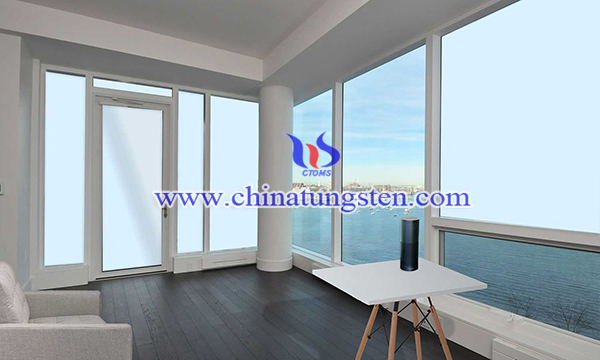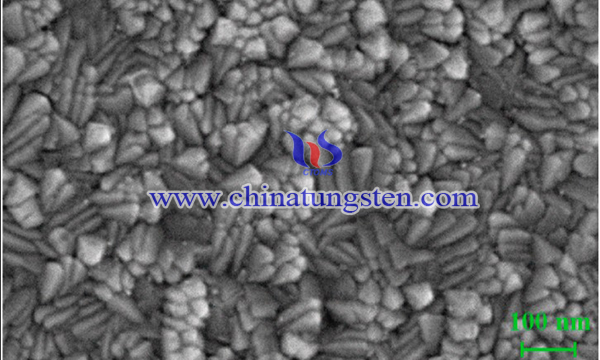Al-Doped WO3 Thin Films for Smart Window Applications
- Details
- Category: Tungsten Information
- Published on Friday, 29 October 2021 08:32
Electrochromic devices such as smart windows have received extensive attention from researchers in related fields in the materials industry. Tungsten trioxide (WO3) is an n-type semiconductor and a promising material due to its high transparency, good coloration efficiency, and low response times. The electrochromic performance of WO3 depends strongly on its particle size, morphology, and structure. However, low electrical conductivity of WO3 can give rise to poor electrochromic performance of the device.

Therefore, aluminium (Al) has been doped on tungsten trioxide to overcome its drawbacks. Al-doped WO3 (Al-WO3)thin films for smart window applications are directly grown on ITO glass by a facile electrodeposition method and annealed in an argon atmosphere at 450 °C for 2h. The preparation process is as below:
First, add 10 mM sodium tungstate dihydrate (Na2WO4·2H2O), 0.5 mM aluminum chloride (AlCl3), and 0.05 M hydrogen peroxide (H2O2) to ultrapure water to prepare an electrolyte. Also add 5 drops of sulfuric acid (H2SO4) to the electrolyte to adjust the pH. Stir all the ingredients in an ultrasonic mixer at 70°C for 10 minutes to obtain a homogeneous solution. A two-step electrodeposition method was used to prepare aluminum-doped WO3 thin films. In the first step, a constant voltage of -0.6 V is applied for 600 seconds, and in the second step, a constant voltage of -1.2 V is applied for 60 seconds. After the deposition process, the film was heated at 450°C for 2 hours with an argon flow rate of 0.5 L/min.

In conclusion, Al-doped WO3 thin films for smart window applications are directly grown on ITO glass by a facile electrodeposition method and annealed in an argon atmosphere at 450 °C for 2h. The results revealed that the direct band gap energies are calculated as 3.62 and 3.34 eV for the WO3 and the Al:WO3, respectively. Compared to the as-prepared WO3, the Al:WO3 film exhibits outstanding electrochromic performance, including wide optical modulation (55.9%), high coloration efficiency (148.1 cm2C-1), quick reaction kinetics (1.23 s and 1.01 s for colored and bleaching times, respectively), good rate capability and cycle durability at a wavelength of 632.8 nm. these results not only provide important insight into a promising electrode for electrochromic displays applications, but also offer an economic and effective strategy for manufacturing of other doped metal oxide films.
- Tungsten Oxide Manufacturer & Supplier, Chinatungsten Online: www.tungsten-oxide.com
- Tungsten News & Prices of China Tungsten Industry Association: www.ctia.com.cn
- Molybdenum News & Price: news.molybdenum.com.cn
- Tel.: 86 592 5129696; Fax: 86 592 5129797; Email: sales@chinatungsten.com



 sales@chinatungsten.com
sales@chinatungsten.com